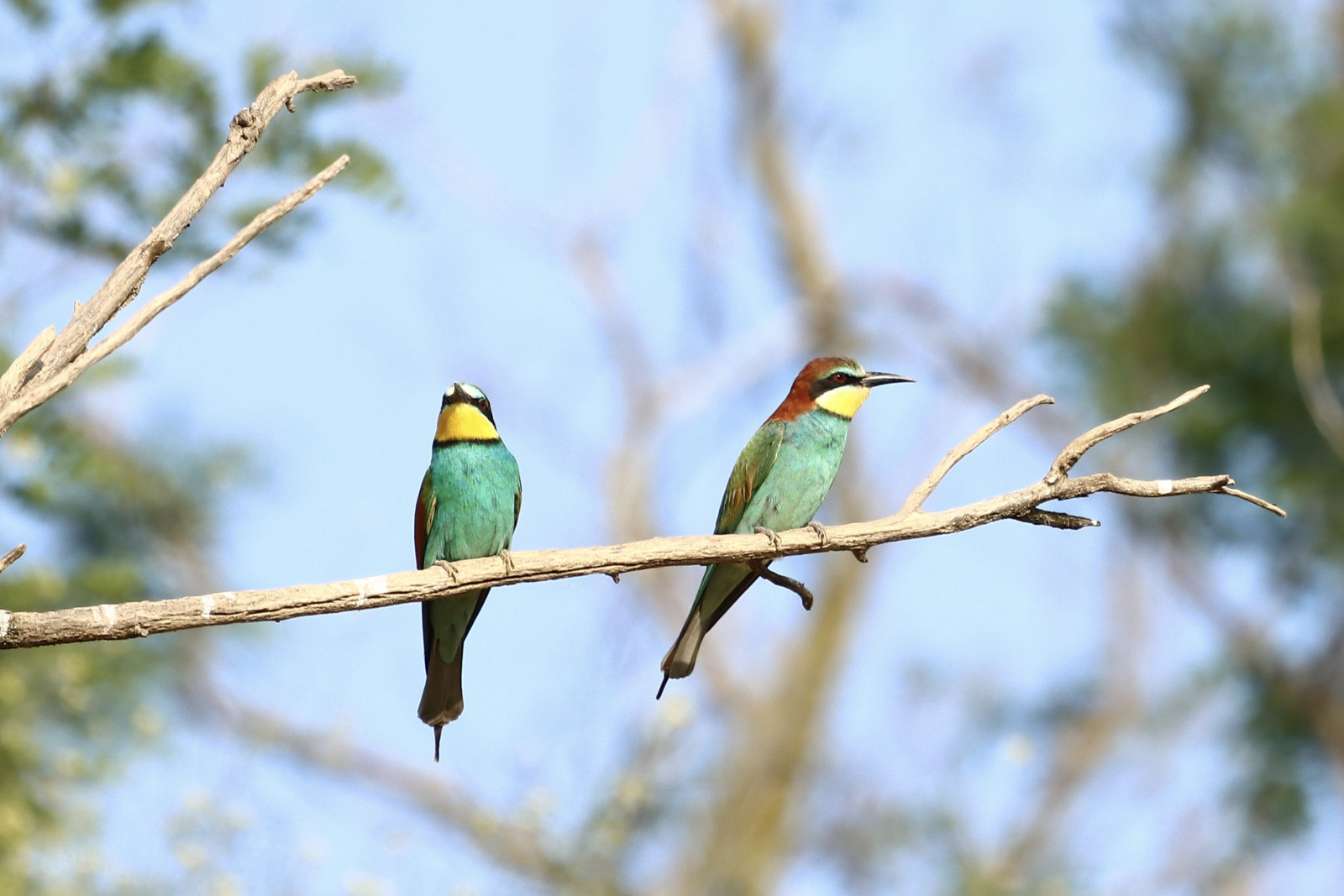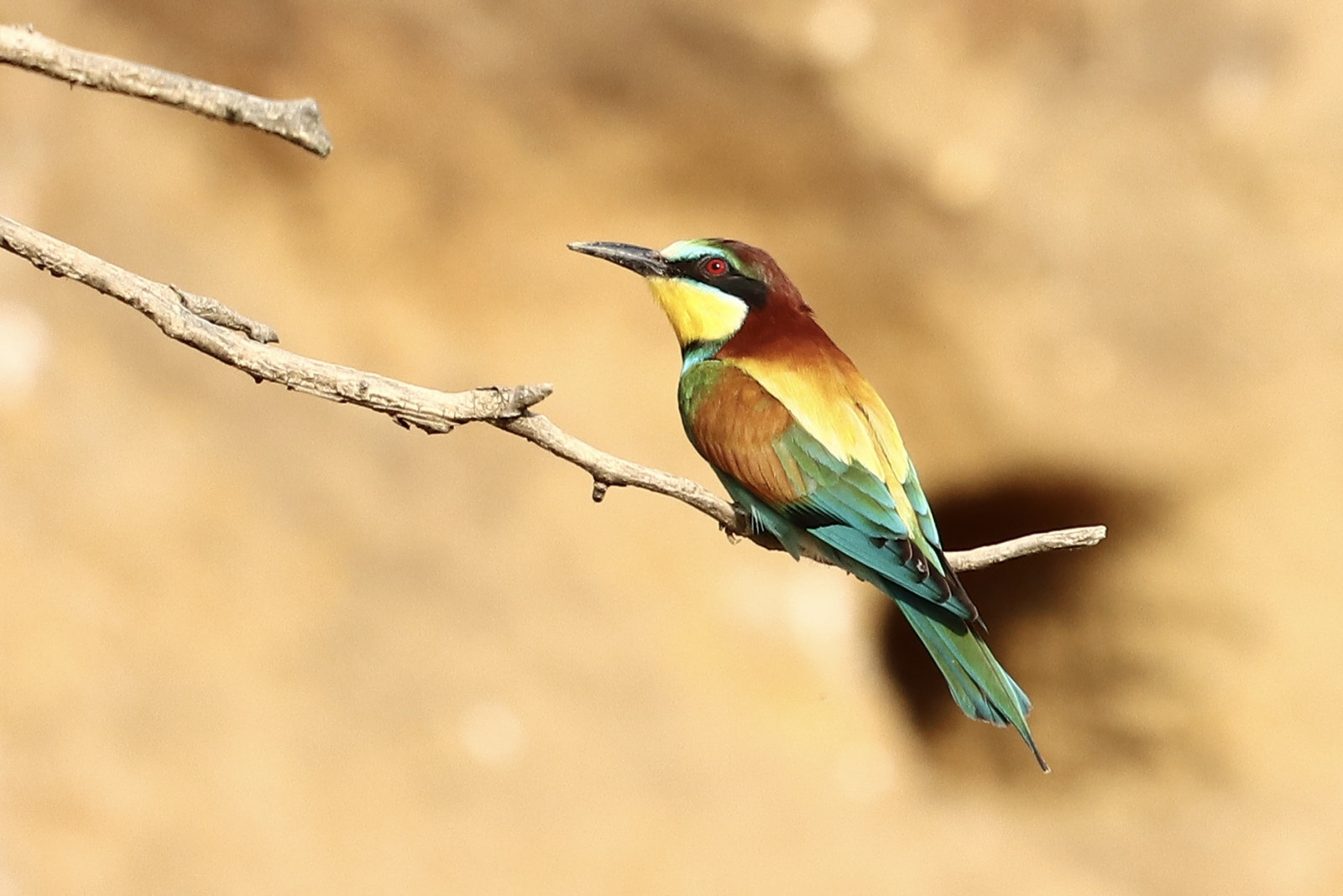Charger images
Les formats d'image autorisés sont de type jpeg, png ou gif
La taille maximale du fichier doit être de 20MB


A little to the east of Weiden am See, there is a sand-coloured scarp, which has been the site of a colony of Guêpier d'Europe for many years.
The brilliantly colourful Guêpier d'Europe are strictly protected and it is imperative that one use the spacious hide to the west of the breeding wall, so as not to disturb the birds’ breeding activity.
Other birds also make use of abandoned or seized Guêpier d'Europe nesting burrows during the breeding season, and the loess wall can harbour a couple of surprises every year.
The route begins at the eastern edge of Weiden am See and follows the by-road, immediately north of the main road, to Gols. After 300 m, take the track branching off to the left and leading slightly uphill. In spring and summer,Rossignol philomèle, Fauvette à tête noire, Linotte mélodieuse, and Serin cini can be heard singing from the many vineyards and little stands of trees and bushes. At the next fork in the road, at the latest, one should already be able to hear the calls of the Guêpier d'Europe that are present here between mid-May and early August. So as not to disturb the birds of another breeding wall nearby, take the trail leading off to the right along the southern edge of a little patch of forest, which leads directly to the desired wall. The entrance to the hide is a few metres to the south. It is important to stay inside this hide for the duration of one’s visit to the colony. Aside from the many Guêpier d'Europe, the breeding wall is also used by Faucon crécerelle, Étourneau sansonnet, and Choucas des tours, to name but a few. A pair of Chevêche d'Athéna even breeds here in some years.
The first Guêpier d'Europe were recorded in Austria towards the end of the 19th century. The first breeding sites were located along the unregulated banks of the Danube. Today, breeding sites in Austria are restricted to secondary breeding walls in sand and gravel pits, vineyards, and defiles. Since Guêpier d'Europe dig a new burrow every year, smaller breeding walls can be used up fairly quickly. Knowing the locations of occupied breeding walls, avoiding (human) disturbance during the breeding period, and occasional maintenance of the walls are essential for a vital breeding population of the richly coloured birds.
Votre feedback sera transmis à l’auteur.rice de cette zone et à l’équipe éditoriale de Birdingplaces, qui l’utiliseront pour améliorer la qualité des informations. (Vous souhaitez publier un commentaire visible en bas de page ? Fermez cette fenêtre et choisissez l’Option 1 : « Publier un commentaire, un conseil ou une observation ».)
Veuillez fournir des suggestions d'améliorations ou d'ajouts au texte de ce site ornithologique.
Veuillez fournir vos suggestions d'améliorations ou d'ajouts à la carte.
Veuillez fournir des suggestions d'améliorations ou d'ajouts à la liste des oiseaux.
Cliquez sur l'icône de l'oiseau () Insérez les noms d'oiseau dans votre langue. Ils seront automatiquement traduits pour les autres usagers !